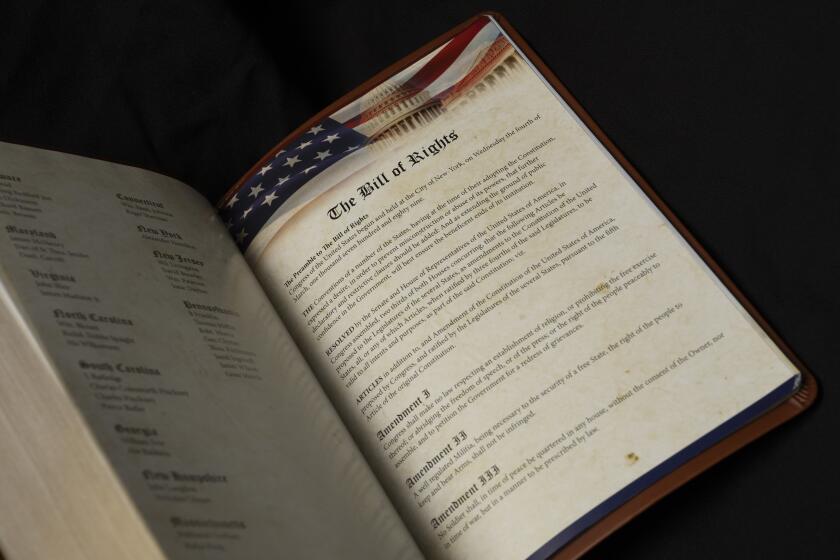Widely influential Russian mathematician
Israel Gelfand, the Russian mathematician whose research laid the mathematical framework for the imaging abilities of MRI and CT scanners and who did crucial work in a host of more esoteric fields, died Monday at Robert Wood Johnson University Hospital in New Brunswick, N.J. He was 96.
During a century when mathematicians were becoming ever more specialized, focusing on narrow and often exotic areas of research, Gelfand became a legend as a generalist who made contributions in more than a dozen areas. His work in the field known as representation theory was an underpinning of quantum physics.
He also was an inspiring teacher, creating math seminars in Moscow and at Rutgers University that provided encouragement and education for aspiring math students and establishing correspondence courses that allowed young students access to the best mathematical ideas of their times.
Gelfand said mathematicians were like music composers and that he was probably most like Mozart, said Edward Frenkel of UC Berkeley, who worked with him in Moscow. “ ‘We like Mozart not because of a particular piece that he created,’ he said. ‘It’s the totality of his work and its profound beauty that make him a great composer.’ Gelfand thought the same applied to his work,” Frenkel said.
“He was considered the greatest mathematician of the last half of the 20th century,” added Vladimir Retakh, his colleague at Rutgers, where Gelfand spent the last part of his career.
“He probably was the last one who worked in almost every area of mathematics, trying to combine things” rather than attempting to solve well-known puzzles.
Retakh noted that Russian mathematician Vladimir Arnold had contrasted the approaches of Gelfand and Gelfand’s mentor, Andrei Kolmogorov, who were probably the two most famous Russian mathematicians of their era. “Imagine they both arrived in a country with a lot of mountains,” he paraphrased Arnold. “Kolmogorov would immediately try to climb the highest mountain. Gelfand would immediately start to build roads.”
His road-building won him many accolades: the prestigious Wolf Prize, mathematics’ equivalent of the Nobel; a grant from the John D. and Catherine T. MacArthur Foundation; the Steele Prize; and the Order of Lenin -- three times.
Israel Moiseevich Gelfand was born Sept. 2, 1913, in the tiny town now known as Krasnye Okny in Ukraine. In the ninth grade, he was expelled from technical school because his father operated a mill and had an assistant, and was thus considered a capitalist. At 15, he contracted appendicitis, which then required a 12-day stay in the hospital. On the way there he asked his parents to buy him a calculus text, and he mastered it in his bed.
He did not complete high school or earn an undergraduate degree, but when he went to Moscow in 1930 seeking work, he began attending mathematics seminars at Moscow State University. Two years later, he was admitted directly into graduate school, receiving his doctorate in 1940.
In 1943 he established his legendary mathematics seminar, held every Monday night for nearly 50 years on the 14th floor of the Moscow university building. “He would welcome all undergraduates, talented graduate students and brilliant professors,” Frenkel said.
The meetings, which often lasted well into the night, were more like a social event than a traditional seminar, where a speaker would go to a blackboard and talk for an hour, Frenkel said. “He would walk the aisles, stop and chat with people, interrupt and ask questions, pull a member of the audience to the blackboard and ask them to repeat what had just been said or to find a mistake in it. His interest was always in the development of the next generation of mathematicians.”
Many of his former students and seminar participants are now prominent mathematicians.
He started a second seminar series on biology after his son Aleksandr contracted leukemia. Although Aleksandr died, Gelfand continued the seminar until he left Moscow. He reestablished the math seminars after he moved to Rutgers in 1990.
Because he was Jewish, Gelfand was pushed out of his position at Moscow State University and into a lesser post at the Institute of Mathematics. He did not receive full membership in the Soviet Academy of Sciences until 1984.
In 1990, he established the Gelfand Correspondence Program, designed for students 13 to 17 who lived in the hinterlands and had little access to formal mathematical training. The program helped students understand math, while fostering their ability to work and learn independently.
In a 2003 interview in the New York Times on his 90th birthday, Gelfand said that studying math could help students achieve a higher intellectual level.
“Mathematics is a way of thinking in everyday life,” he said. “It is important not to separate mathematics from life. You can explain fractions even to heavy drinkers. If you ask them, ‘Which is larger, 2/3 or 3/5 ?’ it is likely they will not know. But if you ask, ‘Which is better, two bottles of vodka for three people or three bottles of vodka for five people?’ they will answer you immediately. They will say two for three, of course.”
Gelfand divorced his first wife, Zorya Shapiro. He is survived by his second wife, Tatiana, also a mathematician; two sons from his first marriage, Sergei of Providence, R.I., and Vladimir of Chicago; a daughter from his second marriage, Tatiana of Jersey City, N.J.; four grandchildren; and three great-grandchildren.
--
More to Read
Sign up for Essential California
The most important California stories and recommendations in your inbox every morning.
You may occasionally receive promotional content from the Los Angeles Times.










